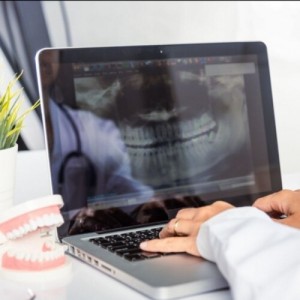
Do Mouthwashes Disrupt the Oral Microbiome? A Balanced Perspective
The Problem
A growing debate questions whether antimicrobial mouthwashes disrupt the oral microbiome—the community of bacteria, fungi, and other microorganisms essential for health. Critics argue that rinses indiscriminately kill good and bad bacteria, potentially altering nitric oxide (NO) metabolism and contributing to disease. The key question is not simply whether rinses cause disruption, but whether this disruption results in meaningful harm—or whether the benefits outweigh the risks.
What the Studies Say
Several studies show that rinses, especially chlorhexidine (CHX), reduce nitrate-reducing bacteria on the tongue. This may slightly lower nitric oxide levels and has been linked to small, temporary increases in blood pressure1. Other research notes reduced bacterial diversity.These results are often presented as negative, but shifts are usually brief and reversible. More importantly, real-world outcomes consistently show healthier gums, less plaque, and fresher breath.
Why the Studies Have Problems
Many concerns arise from study limitations:
- Chlorhexidine-specific: Almost all “negative” studies involve CHX but generalize results to all rinses.
- Short timeframes: Most measure only days or weeks, ignoring long-term adaptation.
- Overemphasis on markers: Small changes in nitric oxide or bacterial ratios are exaggerated, while improvements in periodontal health are overlooked.
- Ignoring hygiene context: In practice, patients also brush, floss, clean their tongues, and see professionals—all of which alter the microbiome.
Everyday Oral Hygiene Also Disrupts the Microbiome
It is often forgotten that nearly every form of oral hygiene disturbs microbial balance:
- Brushing removes bacterial biofilm.
- Tongue cleaning shifts microbial composition.
- Flossing disrupts interdental colonies.
- Professional cleanings dramatically reduce both helpful and harmful bacteria. Yet, no one argues these practices should stop. They remain standard because their benefits far outweigh any short-term disruption. Singling out mouthwash as uniquely harmful is inconsistent.
Effects Not That Bad
Yes, rinses cause short-term microbiome changes. But clinically, they reduce gingivitis, halitosis, and inflammation. The microbiome is resilient and usually returns to baseline quickly. Disruption does not equal lasting harm.
Chlorhexidine: The Center of the Debate
- Chlorhexidine has long been called the “gold standard,” but it is also flawed:
- Substantivity: CHX binds to tissues and releases slowly, prolonging its effects but also extending disruption (Chart 1).
Drawbacks: It stains teeth, alters taste, promotes tartar, and is nonselective, killing beneficial species.
Because so many studies use CHX, they create an overly negative perception of rinses in general. Modern products, such as activated chlorine dioxide (OraCare), achieve antimicrobial effects without these issues.
Nitric Oxide in Perspective
Critics often emphasize how rinses reduce nitrate-reducing bacteria and lower nitric oxide. But only about 5% of nitric oxide is produced in the mouth2. The vast majority is generated in blood vessels and tissues (Chart 2). Any temporary oral reduction has minimal systemic impact.
Benefits Outweigh the Risks
The clinical benefits of rinses are clear:
- Reduced gingivitis and halitosis
- Support for patients unable to maintain plaque control with brushing alone
- Lower periodontal inflammation, which helps reduce systemic inflammatory burden
Compared with these outcomes, the risks of short-lived microbial shifts are negligible.
Periodontal Disease and Systemic Health
The greater threat is untreated periodontal disease, which is strongly associated with systemic illness:
- Heart disease: Oral pathogens are found in arterial plaques3.
- Pancreatic cancer: Long-term periodontal disease correlates with higher risk4.
- Alzheimer’s disease: Oral pathogens and inflammatory markers have been detected in the brain. Preventing periodontal inflammation is far more important than worrying about temporary microbiome shifts5.
Hygiene and the Handwashing Parallel
The debate mirrors earlier skepticism about hygiene. In the 19th century, Ignaz Semmelweis required doctors to wash their hands with chlorinated lime, reducing maternal deaths by 90%6,7. Modern studies confirm similar life-saving benefits from handwashing in newborn care8.
Yes, hygiene disrupts microbial communities—but it saves lives. The same logic applies to antimicrobial rinses: brief shifts in microbes are insignificant compared with their role in preventing periodontal pathogens that drive systemic disease.
Conclusion
Do mouthwashes disrupt the oral microbiome? Yes, briefly. But so do brushing, flossing, tongue cleaning, and professional cleanings—all universally recommended practices.
The microbiome rebounds quickly, while the benefits of rinsing—reduced gingivitis, halitosis, and inflammation—remain. Most criticism stems from CHX studies, which exaggerate risks. Newer rinses provide antimicrobial effects without CHX’s flaws. With periodontal disease linked to heart disease, cancer, and dementia, antimicrobial rinses are not just safe but potentially life-saving. Just as handwashing moved from skepticism to cornerstone, rinses should be recognized as essential tools in oral health.
References
- Kapil V, et al. The role of nitrate-reducing bacteria in blood pressure regulation. Free Radic Biol Med. 2015.
- Lundberg JO, et al. Nitrate and nitrite in biology, nutrition, and therapeutics. Nat Chem Biol. 2009.
- Blaizot A, et al. Periodontal diseases and cardiovascular events: meta-analysis. J Clin Periodontol. 2009.
- Michaud DS, et al. Periodontal disease, tooth loss, and pancreatic cancer risk. J Natl Cancer Inst. 2007.
- Dominy SS, et al. P. gingivalis in Alzheimer’s disease brains. Sci Adv. 2019.
- “Ignaz Semmelweis: The Doctor Who Prescribed Hand-Washing.” PBS NewsHour.
- “Handwashing Saved Lives.” History.com.
- Johns Hopkins Bloomberg School of Public Health. Handwashing reduces newborn mortality by 44%. 2008.
Source: www.oracareproducts.com
 Related articles
Related articles
Oral Hygiene & Prevention 25 September 2023
Mouthwashes, a cornerstone of oral and dental hygiene, play a pivotal role in combating the formation of dental plaque, a leading cause of periodontal disease and dental caries. This study aimed to...
Oral Hygiene & Prevention 08 June 2022
Authors: A.C. Ionescu, G. Gloria Cazzaniga, M. Ottobelli, M. Basso, E. Brambilla
Alteration of the equilibrium between the oral tissues and the biofilm that permanently colonizes the mouth cavity could lead to dysbiosis and is responsible for most...
Digital Dentistry 29 August 2025
Digital dentistry: The new state of the art — Is it disruptive or destructive?
Summarizing the new state of the art of digital dentistry, opens exploration of the type and extent of innovations and technological advances that have impacted – and improved – dentistry.
Restorative dentistry 22 July 2025
Disruptive Innovation in Dentistry: What It Is and What Could Be Next
Dentistry is a technically oriented profession, and the health care sector is significantly influenced by the ubiquitous trend of digitalization. Some of these digital developments have the potential...
News 31 December 2021
Company seeking to remake the dental office experience, Tend, continues to expand its locations on the east coast. Tend has opened three locations in Atlanta and Boston, following openings in New...
 Read more
Read more
Digital Dentistry 04 November 2025
Digitalisation is an expanding field in dentistry and implementation of digital teaching methods in dental education is an essential part of modern education.
Editorials 04 November 2025
NIH grant helps ASOD researchers study TMD pain in adolescents
Adams School of Dentistry’s Caroline Sawicki, DDS, PhD, recently received an NIH-NIDCR R03 grant to study personalized treatment for temporomandibular disorder (TMD) pain in adolescents.
News 04 November 2025
Dental professionals are invited to experience the 2025 Greater New York Dental Meeting at the Jacob K. Javits Convention Center in New York City from November 28 through December 3.
News 04 November 2025
Health-tech company MINISH Technology Inc. announced on October 27th that 22 dentists completed its 15th MINISH Course, the first session held for local practitioners in the United States.
Restorative dentistry 03 November 2025
The worldwide interest of both dentists and patients in esthetic dentistry has affected decision-making in dental practice.















